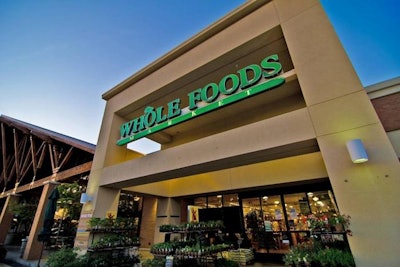
Like many people, I have been interested in whether Amazon’s proposed acquisition of Whole Foods Market will mean any changes in the type of chicken products the grocer sells.
So when I stumbled across the headline “That Chicken From Whole Foods Isn’t So Special Anymore,” I felt compelled to click on it.
The gist of the story, written by Bloomberg’s Deena Shanker and Polly Mosendz with assistance from Shruti Singh, was that broiler production practices expected by Whole Foods are now being embraced by other grocers and the poultry companies that supply them.
Myths keep reappearing
Despite my interest in the topic, I just about didn’t read the full story. Usually, a lead paragraph in a news report is crafted in a way that will pull the readers in. Instead, it almost pushed me away.
Here’s how it read: “Whole Foods Market Inc. doesn’t just sell chickens. It sells shoppers on the idea of chickens raised and treated better than prevailing standards: no antibiotics, no hormones, no cages. Not the sort of chicken you can get anywhere.”
That may be true about the use of antibiotics in poultry production, but essentially everyone in the poultry industry knows that if you can get chicken at a particular place, you can get chicken raised without hormones and chicken that was not raised in cages.
But the myths keep spreading.
A recent survey of chicken consumers that was presented at Chicken Marketing Summit 2017 revealed that how cage use and hormone use were common concerns of chicken consumers, despite the fact that hormone use is prohibited by the government and cage use is only a practice for egg production and not broiler production. Statements like Bloomberg's lead paragraph do nothing to clear up that confusion.
Contradictions in text of article
Despite my being flustered about the misinformation in that lead paragraph, I decided I should go ahead and read the full text of the story.
Really, it was pretty interesting and gave a decent overview of Whole Foods and its approach to sourcing poultry that was raised in accordance to what it views as ethical and humane that ultimately results in wholesome products that consumers can feel about purchasing.
There were brief mentions to both cages and hormones midway down the story when the topic of the Global Animal Partnership (GAP) standards are defined. The article stated that in order to qualify for GAP Step 1 standards, “any product must prohibit antibiotics and hormones and follow a ‘no cages, no crates, no crowding credo.”
Yet Bloomberg itself pointed out that the “no cages, no crates” portion of the GAP policy is not germane to the situation. Several paragraphs earlier, it was written that “The use of synthetic hormones is not approved for U.S. poultry production, meaning that all chicken sold in supermarkets [is] eligible for the hormone-free designation and broiler chickens are almost never raised in cages.”
So if the reporters themselves knew that, why would they write that chicken raised without hormones and in a cage-free environment were so difficult to find.
I already revealed that I almost didn’t read beyond the first paragraph. We can only hope that others who don’t know the truth about cages and hormones in poultry production did read on, because if they didn’t, they may only know the fallacies.


















